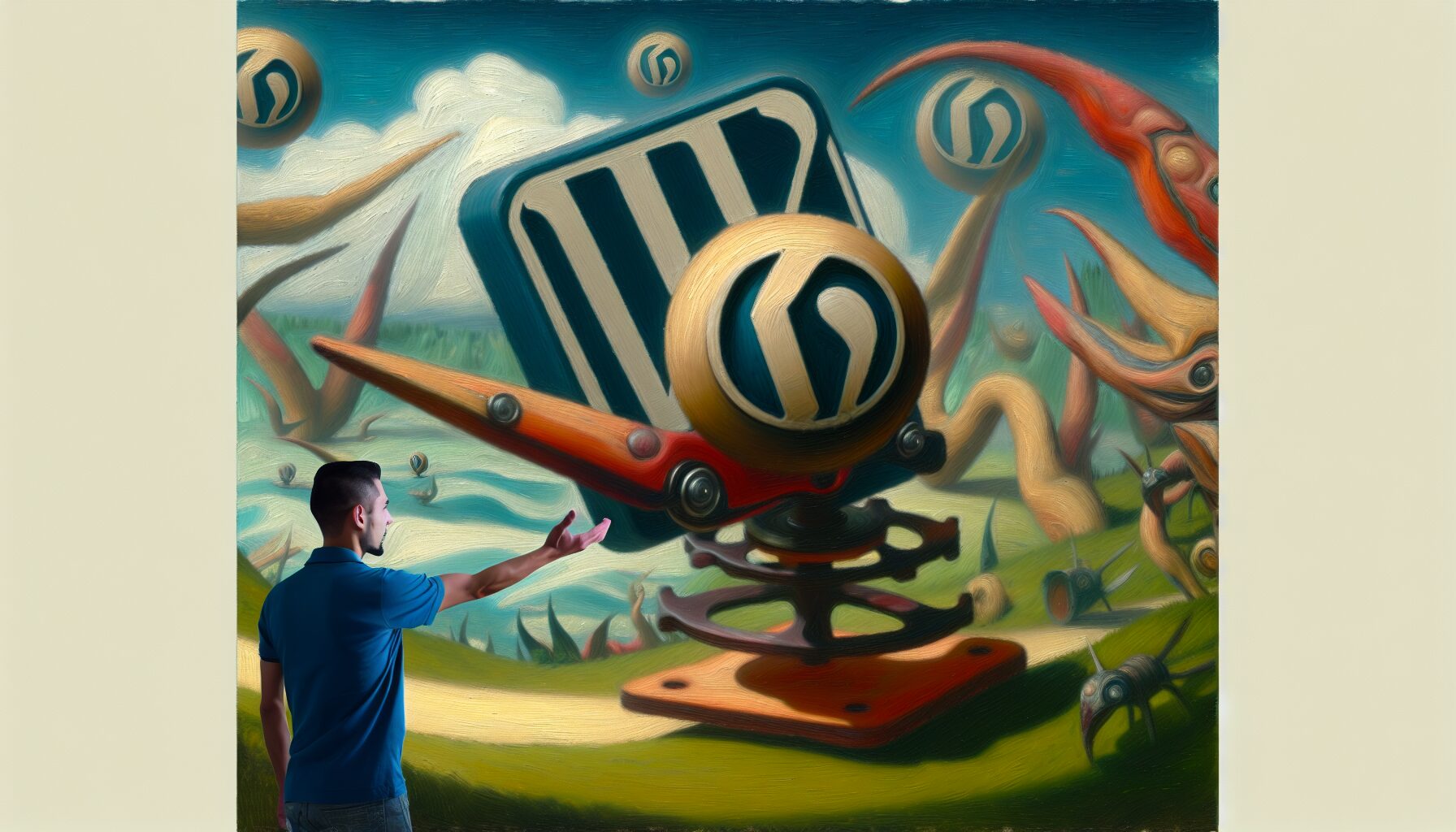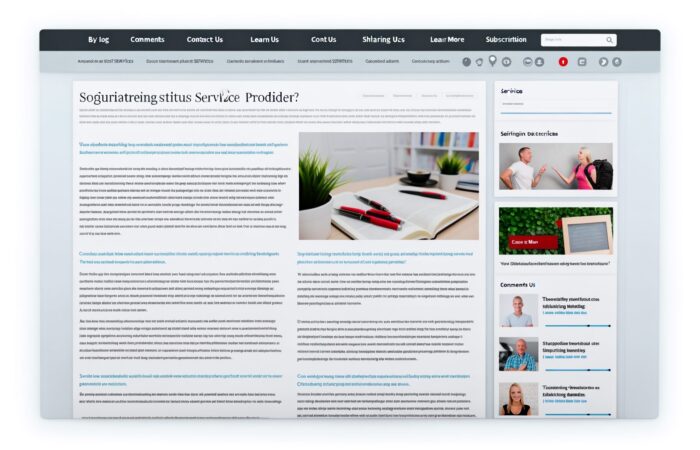Understanding the Basics of Blog Naming and Branding
Have you ever wondered what’s in a name? Quite a lot, actually! Especially when it comes to the world of blogging. Blog naming and branding are critical elements that can make or break your blog’s success. Now, you might be wondering, “Why is that so?”. Let’s dive a bit deeper into this topic!
What’s in a Blog Name?
Imagine this. You’re at a bookstore, browsing through the shelves packed with numerous books. What usually catches your eye first? The title, right? The same idea applies to your blog name. It’s the first thing that your audience sees. A unique, catchy, and meaningful blog name can attract readers and give them an idea about your content right off the bat. So, it’s safe to say that a blog name is your first step towards creating a lasting impression.
Branding – The Bigger Picture
While a blog name is crucial, it’s only a part of the bigger picture – your brand. Branding is a combination of various elements like your blog name, logo, tagline, design, tone of voice, and even the type of content you publish. It represents who you are, what you stand for, and what your blog offers. It’s what sets you apart from the crowd. Consider a big brand like Apple. Their minimalist design, user-friendly interface, and innovative products all form part of their branding.
The Power of Consistency
One thing you should remember is that consistency is key when it comes to branding. This means that all your branding elements should align well together to create a cohesive identity. For instance, if your blog name hints at travel content, but your posts are all about cooking, it might confuse your readers. So, always strive for consistency in your blog name and other branding elements.
Putting it All Together
So, how do you create an effective blog name and branding strategy? Here are a few expert tips:
- Reflect Your Blog’s Essence: Your blog name and branding elements should accurately reflect the content of your blog. They should give your readers a clear idea of what to expect from your blog.
- Get Creative: Don’t be afraid to think outside the box. A unique and creative blog name or logo can help you stand out in a sea of blogs.
- Keep it Simple: While creativity is crucial, it’s also important to keep things simple. A complex blog name or logo might be difficult for your audience to remember.
At the end of the day, remember that your blog name and branding are like a promise to your readers. They set the expectations for what your readers will find when they visit your blog. So, make sure you put some thought into it. Happy blogging!
Identifying Your Niche and Target Audience
So, you’re ready to plunge into the world of blogging. That’s great! But before you dive right in, it’s crucial to find your niche and identify your target audience. Why, you ask? It’s simple: the more specific your niche and the more you know about your target audience, the easier it will be to create content that resonates with them. This is one of the fundamental steps in creating a successful blog.
What’s a Niche and Why is it Important?
First things first: a niche is a distinct segment of a market. In the world of blogging, your niche is the specific topic or area that your blog will focus on. It’s important to choose a niche you’re passionate about because you’ll need that passion to fuel your content creation over time.
Identifying your niche is crucial for a few reasons. First, it will help you stand out in the vast sea of blogs on the internet. Second, it will allow you to position yourself as an authority in that particular field. Lastly, having a defined niche makes it easier to attract a loyal and engaged audience who’s interested in what you have to say about that specific topic.
How to Identify Your Target Audience
Once you’ve nailed down your niche, it’s time to identify your target audience. Your target audience is the group of people who are most likely to be interested in your blog’s content. It’s not about attracting everyone, but rather focusing on those who would find your content most valuable.
- Demographics: Consider factors like age, gender, occupation, and location.
- Lifestyle: What are their hobbies? What kind of lifestyle do they lead? Are they parents, students, professionals?
- Needs and Wants: What problems are they facing that your blog can solve? What are their interests and what information are they seeking?
Understanding your target audience is imperative because it allows you to create content that they’ll love. It helps you to speak their language, understand their pain points, and offer them solutions. This way, you’ll keep them coming back for more.
Finding That Sweet Spot
The intersection of your passion, your niche, and the needs of your target audience is where the magic happens. This is your sweet spot. Finding it can take time and research, but the payoff is huge. You’ll be able to create a blog that’s not only enjoyable for you to write, but also serves your readers and keeps them coming back for more.
So, take your time. Find your niche and identify your target audience before you embark on your blogging journey. Remember, a well-defined target audience and niche are the foundations of a successful blog. Happy blogging!
Crafting a Memorable and Descriptive Blog Name
So, you’ve decided to jump on the blogging bandwagon? That’s fantastic news! But now comes the exciting yet slightly daunting part – coming up with a unique, memorable, and descriptive blog name. Let’s get straight into it!
Starting with Brainstorming
First things first, brainstorming. Grab a pen, a piece of paper, and jot down all the words, phrases, and ideas that come to mind when you think about your blog’s theme or niche. As our dear friend, Einstein said, “Creativity is intelligence having fun.” So, let your imagination run wild and see what concepts you can come up with!
Keeping it Simple
While creativity is key, remember the KISS principle – Keep It Simple, Stupid. The best blog names are generally short, snappy, and to the point. You want your readers to remember your blog name, and the simpler it is, the more likely they will. Plus, a shorter name is also easier to type into a search bar, which is always a bonus.
Reflecting Your Blog’s Essence
Next, ensure your blog name reflects the content of your blog. It’s important for the name to give your target audience an idea of what they can expect from your blog. If your blog is about vegan recipes, including ‘vegan’ or ‘plant-based’ in the title could be useful. For a tech blog, terms like ‘tech’, ‘gadgets’, or ‘innovation’ might work well.
Checking Availability
Once you have a few potential names, it’s time to check their availability. Sadly, someone else might have beaten you to your ideal blog name. But don’t lose heart – this is where your creativity can shine again. Try variations, play with words, or consider adding short, relevant terms. Just remember to keep it simple and clear.
Get a Second Opinion
Lastly, once you’ve narrowed down your choices, why not get a second opinion? Share your potential blog names with close friends or family members. Their feedback might just provide the insight you need to make your final decision.
In conclusion, a great blog name can be a powerful tool when it comes to branding and attracting readers. It’s an opportunity to make a strong first impression, so take your time and choose wisely. Happy blogging!
The Role of Domain Names in Blog Branding
So, you’ve decided to start a blog. You’ve got a brilliant concept, compelling content ideas, and a clear grasp of your target audience. But have you given any thought to your domain name?
Often, this aspect is overlooked in the excitement of launching a new blog. However, your domain name plays a critical role in defining your brand, enhancing your online presence, and ensuring your blog is easily discoverable.
Why is a Domain Name Important?
Think of your domain name as your blog’s street address on the world wide web. It’s how your audience finds you in the vast digital neighborhood. A well-chosen domain name can not only boost your brand’s credibility but also make a lasting impression on your audience.
- Brand Recognition: A unique and creative domain name helps build brand recognition. It sets you apart from the competition and can reflect the personality of your blog.
- SEO Advantage: Including relevant keywords in your domain name can improve your blog’s SEO ranking, making it easier for your target audience to find you online.
- Trust and Credibility: A domain name that matches your blog’s name and content suggests professionalism and can help build trust with your audience.
Choosing the Perfect Domain Name
Now that we understand why domain names are important, how do you go about choosing one? Here are some pointers:
- Keep it Simple: Your domain name should be easy to type and remember. Avoid using complicated words or unusual spellings.
- Be Descriptive: Where possible, choose a domain name that gives an idea of what your blog is about. This helps in attracting the right audience.
- Think Long-Term: Choose a domain name that will still be relevant as your blog grows and evolves over time.
Protecting Your Domain Name
Once you’ve chosen the perfect domain name, it’s essential to protect it. Consider registering similar domain extensions (.net, .org, .biz) to prevent others from using a similar name. Also, renew your domain registration timely to avoid losing your domain name to someone else.
Wrapping Up
Your domain name is much more than a digital address for your blog. It’s a powerful branding tool that can significantly influence your blog’s success. So, take your time, think creatively, and choose a domain name that truly represents your brand and resonates with your audience.
Remember, a great domain name is catchy, memorable, easy to type, and reflective of your blog’s content and personality. So, make your domain name count!
Utilizing Visual Elements for Strong Brand Identity
When it comes to creating a strong brand identity for your blog, there’s much more to consider than just a catchy name. One crucial aspect that often gets overlooked is the visual elements of your blog. A well-selected set of visuals can do wonders in making your brand memorable and captivating to your audience. So, let’s dive into how exactly you can utilize visual elements to enhance your blog’s brand identity!
Choosing the Right Colors
Color plays a significant role in how your blog is perceived. It’s not just about choosing your favorite hues, it’s about selecting colors that represent your brand and appeals to your target audience. Studies have shown that up to 90% of initial judgments about a product are based on color alone. So, think about the emotions and messages you want to convey. For instance, blue often signifies trust and reliability, while red channels energy and passion.
Distinctive Logo
A unique logo is another powerful visual element. It acts as the face of your brand, making it instantly recognizable. Invest time (and perhaps even a little money) in creating a logo that truly encapsulates the essence of your blog. Keep it simple, yet impactful. Remember, your logo will be used in multiple places, from your blog header to social media profiles, so it needs to be versatile and scale well.
Consistent Imagery
Whether it’s the photos you use in your blog posts or the images on your social media, maintaining consistency is key. Consistent imagery helps to reinforce your brand identity and create a seamless visual experience for your audience. Use a similar style, filter, or theme across all your images to achieve this. There are numerous editing tools and apps available that can help you do this with ease.
Typography Matters
Lastly, don’t underestimate the power of typography. The fonts you choose can significantly influence the overall look and feel of your blog. Just like with colors, different fonts can evoke different emotions and perceptions. Choose a font that aligns with your brand personality. Complement it with a secondary font for headings or highlights, but remember to keep it readable and pleasing to the eye.
In conclusion, your blog’s visual elements are just as important as the name and content in creating a strong brand identity. They help to create a cohesive and appealing experience for your audience, making your brand more memorable and engaging. Remember, consistency is your best friend in this endeavour. So, start experimenting with different visuals and see how they transform your blog’s identity!
SEO Considerations for Blog Names and Branding
Hey there, savvy blogger! Let’s talk about something that is crucial yet sometimes overlooked when naming your blog and building your brand: Search Engine Optimization (SEO). Yes, those three letters that can make a huge difference in your blog’s visibility and popularity on the World Wide Web.
What is SEO and Why is it Important?
SEO is a collection of strategies and techniques aimed at helping your blog get higher rankings in search engine results. This can lead to an increase in your blog’s visibility and, subsequently, a higher number of visits. So, when you’re thinking about your blog name and brand, SEO should be in the forefront of your mind. Don’t worry, it’s not as complicated as it sounds!
Choosing an SEO-friendly Blog Name
When choosing your blog name, there are a few key SEO considerations you should bear in mind:
- Your blog name should be unique, but still easy to remember and spell.
- Consider including a keyword related to your blog’s topic. This can help search engines understand what your blog is about.
- Avoid using numbers and hyphens in your blog name as they can confuse search engines (and your readers).
For instance, if you’re starting a travel blog, a name like ‘The Rambling Nomad’ could be more effective than ‘TravelBlog123’. The former is not only unique and easy to remember, but also contains keywords “rambling” and “nomad”, which can help your SEO efforts.
Branding and SEO
Branding and SEO go hand in hand. Here’s how you can use SEO to enhance your blog’s brand:
- Consistent use of brand name: Use your blog name consistently across all your posts and pages. Consistency helps search engines identify your brand.
- Quality content: SEO isn’t just about keywords. Creating high-quality content that provides value to your readers is key. Not only does it make your readers keep coming back, but it also signals to search engines that your blog is valuable and relevant.
- Active social media presence: Share your blog posts on social media. This increases your online presence, drives traffic to your blog, and boosts your SEO.
You see, SEO isn’t as terrifying as it first appears, right? And remember, SEO is not a one-time thing but rather an ongoing process. Keep these tips in mind when naming and branding your blog, and you’ll be well on your way to a higher search engine ranking and a more visible brand. Happy blogging!
Monitoring and Evolving Your Brand Over Time
Good to see you back. We’ve been discussing how to name and brand your blog, right? Well, here we are at the last stage – monitoring and evolving your brand over time. Excited? You should be!
The journey of building a brand doesn’t end the moment you have your logo, blog name, color scheme, or even your domain. No, siree! A blog brand is not a static entity; it’s a living, breathing thing. It evolves, adapts, grows, and changes with time. As your blog matures and your audience expands, your brand should also reflect these changes. So, let’s dive right in, shall we?
Regular Brand Audits
Ever heard of the term “brand audit”? It sounds a bit technical, doesn’t it? But trust me, it’s not as intimidating as it sounds. Essentially, a brand audit is just a health check for your brand.
- Are your blog’s visuals still capturing your brand’s essence?
- Does your blog name still resonate with your content and audience?
- Has your audience’s perception of your brand changed?
Asking these questions regularly helps you keep track of your brand’s evolution and ensures it’s moving in the right direction.
Stay Tuned to Your Audience
Remember: your audience is the lifeblood of your blog. So, keep a keen eye on their changing preferences and needs. Engage with them, ask for their feedback, and understand their evolving tastes. This will help you tweak and refine your brand in a way that continues to resonate with them.
Adapt to Industry Trends
The blogging world is always evolving, with new trends and styles popping up regularly. Staying updated with these changes and adapting your brand accordingly is vital for staying relevant. You don’t want to be stuck in the past while the world moves forward, right?
Be Open to Change
Change can be scary, I get it. But remember, change is often necessary for growth. Embrace it. Don’t hesitate to rethink your branding if it’s not working anymore. After all, your brand is a reflection of your blog’s soul and it needs to be authentic and true to your vision.
Branding is a never-ending journey, not a destination. So, keep evolving, stay true to your essence, and remember to enjoy the process!











No Comment! Be the first one.